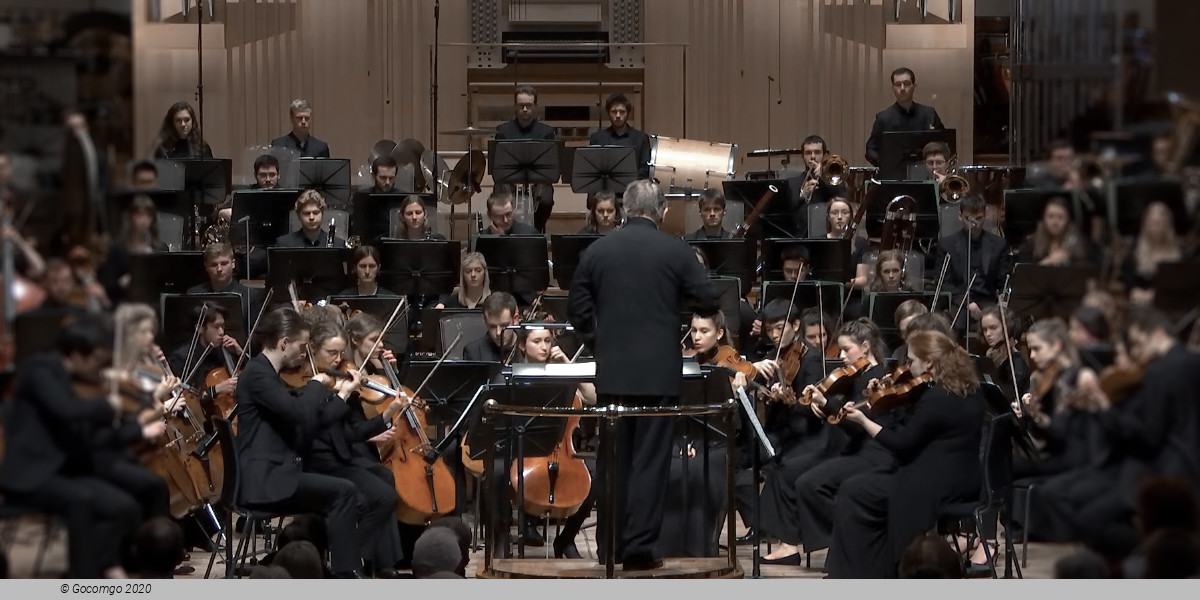Events1 results
About
Joseph Bologne, Chevalier de Saint-Georges was a champion fencer, classical composer, virtuoso violinist, and conductor of the leading symphony orchestra in Paris. Born in the French colony of Guadeloupe, he was the son of George Bologne de Saint-Georges, a wealthy married planter, and Anne dite Nanon, his wife's African slave.
His father took him to France when he was young, and he was educated there, also becoming a champion fencer. During the French Revolution, the younger Saint-Georges served as a colonel of the Légion St.-Georges, the first all-black regiment in Europe. He fought on the side of the Republic. Today the Chevalier de Saint-Georges is best remembered as the first known classical composer who was of African ancestry; he composed numerous string quartets and other instrumental music, and opera.
Nothing is known about Saint-Georges's early musical training. Given his prodigious technique as an adult, Saint-Georges must have practiced the violin seriously as a child. There has been no documentation found of him as a musician before 1764, when violinist Antonio Lolli composed two concertos, Op. 2, for him, and 1766, when composer François Gossec dedicated a set of six string trios, Op. 9, to Saint Georges. Lolli may have worked with Bologne on his violin technique and Gossec on compositions.
(Beauvoir's novel says that "Platon", a fictional whip-toting slave commander on Saint-Domingue, "taught little Saint-Georges" the violin.)
Historians have discounted François-Joseph Fétis' claim that Saint-Georges studied violin with Jean-Marie Leclair. Some of his technique was said to reveal influence by Pierre Gaviniès. Other composers who later dedicated works to Saint-Georges were Carl Stamitz in 1770, and Avolio in 1778.
In 1769, the Parisian public was amazed to see Saint-Georges, the great fencer, playing as a violinist in Gossec's new orchestra, Le Concert des Amateurs. Four years later he became its concertmaster/conductor. In 1772 Saint-Georges created a sensation with his debut as a soloist, playing his first two violin concertos, Op. II, with Gossec conducting the orchestra. "These concertos were performed last winter at a concert of the Amateurs by the author himself, who received great applause as much for their performance as for their composition." According to another source, "The celebrated Saint-Georges, mulatto fencer and violinist, created a sensation in Paris ... when two years later ... at the Concert Spirituel, he was appreciated not as much for his compositions as for his performances, enrapturing especially the feminine members of his audience."
Saint-Georges' first compositions, Op. I, were a set of six string quartets, among the first in France, published by famed French publisher, composer, and teacher Antoine Bailleux. They were inspired by Haydn's earliest quartets, brought from Vienna by Baron Bagge. Saint-Georges wrote two more sets of six string quartets, three forte-piano and violin sonatas, a sonata for harp and flute, and six violin duets. The music for three other known compositions were lost: a cello sonata, performed in Lille in 1792, a concerto for clarinet, and one for bassoon.
Saint-Georges wrote twelve additional violin concertos, two symphonies, and eight symphonie-concertantes, a new, intrinsically Parisian genre of which he was one of the chief exponents. He wrote his instrumental works over a short span of time, and they were published between 1771 and 1779. He also wrote six opéras comiques and a number of songs in manuscript.
In 1773, when Gossec took over the direction of the prestigious Concert Spirituel, he designated Saint-Georges as his successor as director of the Concert des Amateurs. After fewer than two years under the younger man's direction, the group was described as "Performing with great precision and delicate nuances and became the best orchestra for symphonies in Paris, and perhaps in all of Europe."
In 1781, Saint Georges's Concert des Amateurs had to be disbanded due to a lack of funding. Playwright and Secret du Roi spy Pierre Caron de Beumarchais began to collect funds from private contributors, including many of the Concert's patrons, to send materiel aid for the American cause. The plan to send military aid via a fleet of fifty vessels and have those vessels return with American rice, cotton, or tobacco ended up bankrupting the French contributors as the American congress failed to acknowledge its debt and the ships were sent back empty. Saint-Georges turned to his friend and admirer, Philippe D'Orléans, duc de Chartres, for help. In 1773 at the age of 26, Philippe had been elected Grand Master of the 'Grand Orient de France' after uniting all the Masonic organizations in France. Responding to Saint-Georges's plea, Philippe revived the orchestra as part of the Loge Olympique, an exclusive Freemason Lodge.
Renamed Le Concert Olympique, with practically the same personnel, it performed in the grand salon of the Palais Royal. In 1785, Count D'Ogny, grand master of the Lodge and a member of its cello section, authorized Saint-Georges to commission Haydn to compose six new symphonies for the Concert Olympique. Conducted by Saint-Georges, Haydn's "Paris" symphonies were first performed at the Salle des Gardes-Suisses of the Tuileries, a much larger hall, in order to accommodate the huge public demand to hear Haydn's new works. Queen Marie Antoinette attended some of Saint-Georges' concerts at the Palais de Soubise, arriving sometimes without notice, so the orchestra wore court attire for all its performances. "Dressed in rich velvet or damask with gold or silver braid and fine lace on their cuffs and collars and with their parade swords and plumed hats placed next to them on their benches, the combined effect was as pleasing to the eye as it was flattering to the ear." Saint-Georges played all his violin concertos as soloist with his orchestra.


